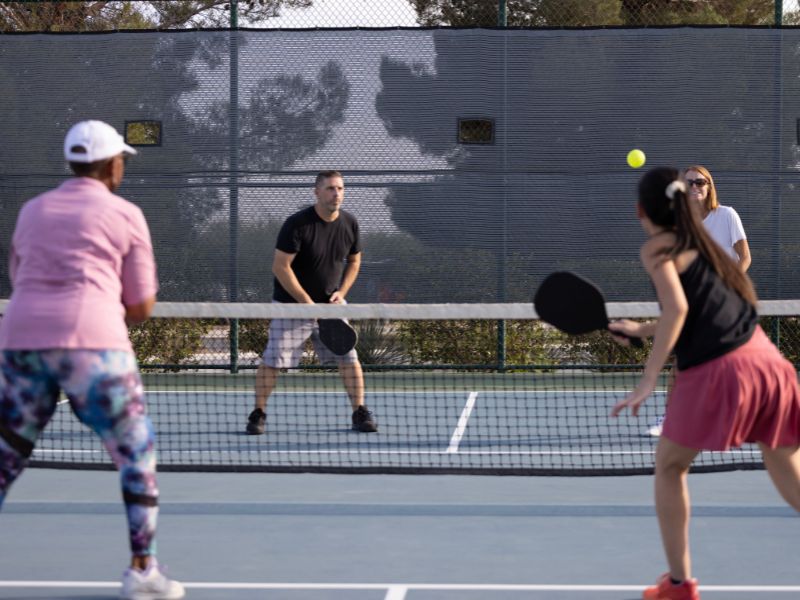The Unstoppable Rise! Pickleball, the nation’s fastest-growing sport for five years running, boasts 48.3 million U.S. adults (19% of adults) playing in the past year, per the Pickleball Pros Association. Enthusiasts celebrate, but opponents frown as courts sprout like mushrooms, echoing with noise. Legal battles erupt, labeling it a ‘cult,’ while injuries forecast a $500M medical toll. Drama abounds – your ultimate pickleball guide!”

npr.org
Pickleball: What Is It?
Conceived in 1965 by Joel Pritchard, Bill Bell, and Barney McCallum, pickleball emerged as a summer pastime for their children. This blend of tennis, badminton, and ping pong, playable solo or in pairs, is cost-effective and straightforward. For less than $200, you can acquire paddles, balls, and a net akin to pickleball’s dimensions. Existing tennis and basketball courts often transform into pickleball courts, enhancing accessibility.
Addiction: What Draws People In
Erin McHugh, author of “Pickleball Is Life,” credits the addictive nature to its easy learning and inclusivity. Connor Pardoe, CEO of the Professional Pickleball Association Tour, highlights how it unites diverse people quickly. Sports psychology coach Bill Cole notes its positive mental health effects.

nbcnews.com
Divisive: Why Is It?
The noise: People nationwide are upset about loud “popping” noises, leading to legal battles.
A perceived coltishness: Pickleball’s marketed as beginner-friendly, but some see it as exclusive due to intense marketing and unclear sport status. Amanda Montell notes parallels with extreme groups. Pardoe highlights community focus, fueled by a competitive passion for improvement.
Turf wars: Pickleball conflicts erupt as public spaces are repurposed. New York City saw a parent-pickleball clash. Similar issues arise, particularly with basketball or tennis courts. McHugh stresses sharing, not exclusion, for diverse public activities.
